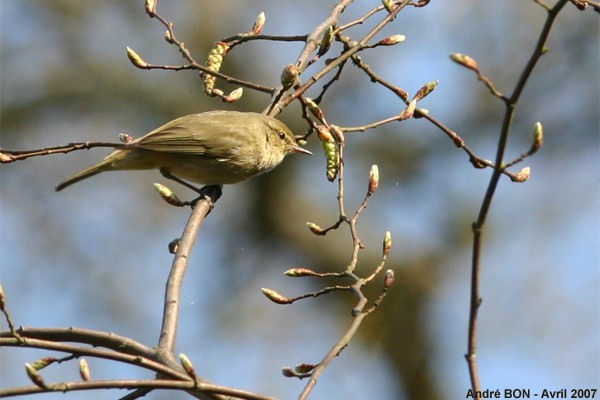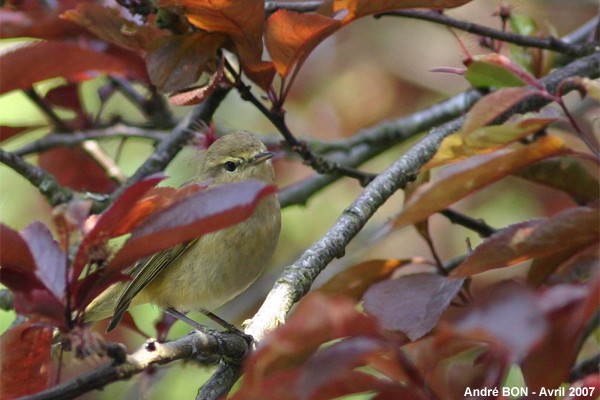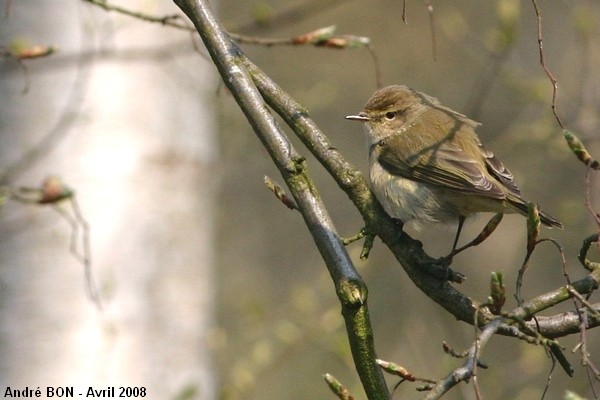


| Northern Chiffchaff (Phylloscopus collybita (Vieillot, 1817)) |



|
|
Scientific name: Phylloscopus collybita (Vieillot, 1817) Common name: Northern Chiffchaff Other names: Common Chiffchaff French name: Pouillot véloce Order: Passeriformes Family: Sylviidae Size: Size : 11 cm; Weight : 6 to 9 g. Habitat: Parks, gardens and woodland areas. Food: Insects and spiders captured along branches, sometimes some fruits. Nesting: The ball-shaped nest is built with twigs and dead leaves. It is located low in the vegetation, even sometimes on the ground. There are one or two broods per year of 5 to 7 eggs, between April and July. Migration: Since September Northern Chiffchaffs move southwards to the Mediterranean Basin. This is one of the first migratory bird to come back late March. Geographic area: Europe, Asia east to Siberia, North-western Africa. |
The Northern Chiffchaff is a small bird. The upperside is greenish grey, the underside is white or yellowish white. The bill and the legs are thin. The legs are a dark colour. The tail is short, thin and straight ended. It shows a thin pale eye stripe. It well known for its repetitive song (chiffchaff) from which it got its English common name. It is difficult to identify among other Warblers (like Willow Warbler which has paler legs). |
| [To know more about the Northern Chiffchaff] [Next picture] [Top] |

|
I have shot this picture in a clearing. I am not totally sure of the identification. This may be another Warbler species. The date the picture is taken is also an important information. The Northern Chiffchaff is one of the first birds to fly back from migration, late March early April. |
| [To know more about the Northern Chiffchaff] [Next picture] [Previous picture] [Top] |

|
Here is one the visitor of my garden. I need to make progress in bird's song identification. It is said than the Chiffchaff's song is one of the easiest to recognize. |
| [To know more about the Northern Chiffchaff] [Previous picture] [Top] |

|
A new time, this identification was based on the date of the picture, early April. This is not 100% sure. |